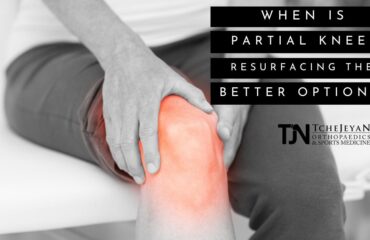In orthopedic surgery, implant devices can be made of several different materials. From chrome to cobalt to mobinium – several elements are used to fabricate the devices that improve the lifespan of a joint artificially. However, most implant devices are made of titanium due to their natural elasticity. It has properties similar to human bone, namely a 3% elasticity yield. This allows a slight bit of flexibility to the material, which mimics that of human bones. Additionally, very few people have allergies to titanium, making it a universally acceptable product, especially for hip replacements.
Nickel As An Implant Ingredient
In addition to titanium, many implants are articulated with ceramic with polyethylene materials. Chrome Alloy is another type of metal used in orthopedic devices. About 5% of Chrome Alloy is actually made up of nickel. Unfortunately, a small percentage of patients have an allergy to nickel, which causes dermatitis (a skin reaction) much like what you’d see from cheap jewelry that irritates the skin.
This type of reaction does not necessarily mean there is a high risk. It’s not as if the body will reject the device. The biggest risk is internal inflammation. Nickel can be found in everything from coins to zippers to eyeglass frames and earrings, but if patients know that they have a nickel allergy, they’re able to take advantage of nickel-free products in the orthopedic industry.
How does one diagnose this? There are skin tests and blood tests that an allergist can perform, but most often this is something recognized by the patient due to their experience with nickel in other items like jewelry. If the patient is unaware, surgeons usually play it safe and use a nickel-free variant.
Hip Replacements
Today’s hip replacement devices, for example, can be titanium with polyethylene and ceramic components. Historically, hip replacements would wear out due to plastic liners. Nowadays, alternative materials are used in the bearings, providing longevity of the device. Hip and knee replacements are largely dependent upon the bearing surfaces having minimal friction. This translates to minimal wear.
In the 2000s, metal on metal bearings was used to replace the plastic liners of old. As a result, the metal bearings would rub against each other, leaving metal shavings of cobalt, chrome, and other metals. The results included hypersensitivity reactions in patients who were diagnosed in their blood. Hip replacements were then revised to eliminate the intolerance of a particular brand’s implants. As a result, there are rarely any metal-on-metal hip replacements in North America today.
Knee Replacements
For knee replacements, the articulation is metal to plastic. The metal does have nickel in it, but certain manufacturers do offer alternatives for patients with nickel allergies. One example is a product called Tyvanium by Zimmer. According to this manufacturer, “Metal hypersensitivity is an immunological reaction of the body against metallic particles (ions) that are released as a result of implant wear or corrosion. Metal hypersensitivity in patients undergoing joint replacement may lead to complications, as the reaction can induce an immune response, leading to inflammation and sometimes implant failure.” [1] In response, Zimmer offers a nickel-free variant for sensitive patients.
Planning Ahead
Metal allergies are legitimate concerns that should be addressed with an orthopedic specialist prior to surgery. Thankfully, the world of orthopedic implants has advanced incredibly over the decades. When aligned properly, today’s implant devices can offer a better range of motion than the original, injured joint.
To learn more about metal allergies or orthopedic implants, reach out to Dr. Gregory H. Tchejeyan, board-certified orthopedic surgeon and owner of TJN Orthopedics in Thousand Oaks, California. His friendly staff welcomes the opportunity to get to know you!
[1] https://www.zimmerbiomet.com/content/dam/zimmer-biomet/medical-professionals/knee/persona-knee-system/2932.2-GLBL-en-Persona-Ti-Nidium_Knee-Brochure.pdf



[…] you have a fracture in your joint, tools such as pins, screws, rods, and plates, often made of metal, will be used to hold your bones in place while they heal. In some cases, these will be removed […]